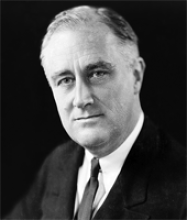Martin County Explores Uses for Network It is Building
Martin County, Florida, is building a county-owned network (that we wrote about back in September) in response to gross overcharging by Comcast for the connections they need to connect their City Departments.
The County Commission voted unanimously Tuesday to allocate $100,000 to pay experts to advise county officials about ways the new broadband network the county government is constructing could be used to generate revenue as well as promote economic development and job creation.
...
Precision Contracting Services of Jupiter started construction on the $4.2 million network in January and is expected to finish the project by January 2012. The network is expected to serve 280 government, public safety, educational and health care organizations.
Having committed to building a network to meet their own needs, they are now searching for ways to leverage that investment to best meet community needs. They will evaluate laws, conduct a survey of residents and businesses to find what their needs/desires are, and possibly develop a business plan.
Last Monday, the day before the planned vote, a Comcast regional VP had the gall to ask the County Commissioners to delay their vote. No thanks Comcast, these folks have waited long enough for the broadband they need, that you have no interested in delivering in a timely nor affordable manner. On Tuesday, the Council voted unanimously to approve the contract.
Good for them.





 The question is why they want faster connections. Only 20% say their current connection completely meets their need to conduct online testing and assessment applications - with another 44% saying it "mostly" meets those needs.
The question is why they want faster connections. Only 20% say their current connection completely meets their need to conduct online testing and assessment applications - with another 44% saying it "mostly" meets those needs.
 These gaps represent a tremendous opportunity for growth - communities should be building their own fiber-optic connections to connect these key institutions and ensure they will have affordable, fast, and reliable connections well into the future. By owning the network, these institutions will have greater control over future costs and their capacity to take advantage of even newer applications.
The FCC should favor locally owned networks to encourage self-reliance instead of never-ending subsidies to private carriers who have little incentive to lower prices and increase investment.
These gaps represent a tremendous opportunity for growth - communities should be building their own fiber-optic connections to connect these key institutions and ensure they will have affordable, fast, and reliable connections well into the future. By owning the network, these institutions will have greater control over future costs and their capacity to take advantage of even newer applications.
The FCC should favor locally owned networks to encourage self-reliance instead of never-ending subsidies to private carriers who have little incentive to lower prices and increase investment.